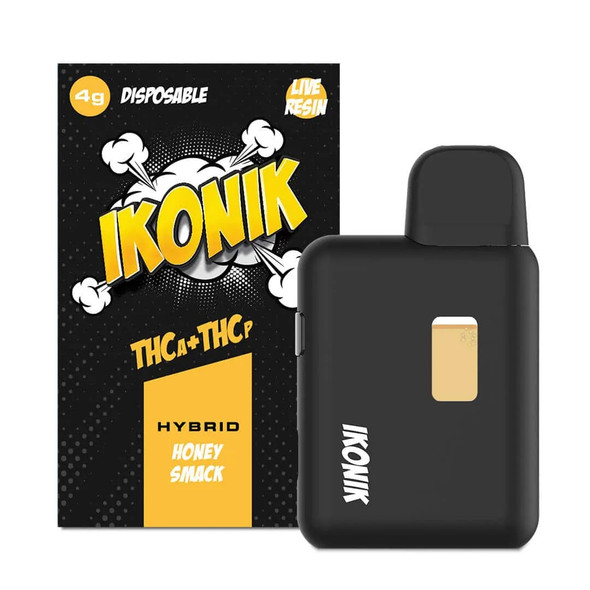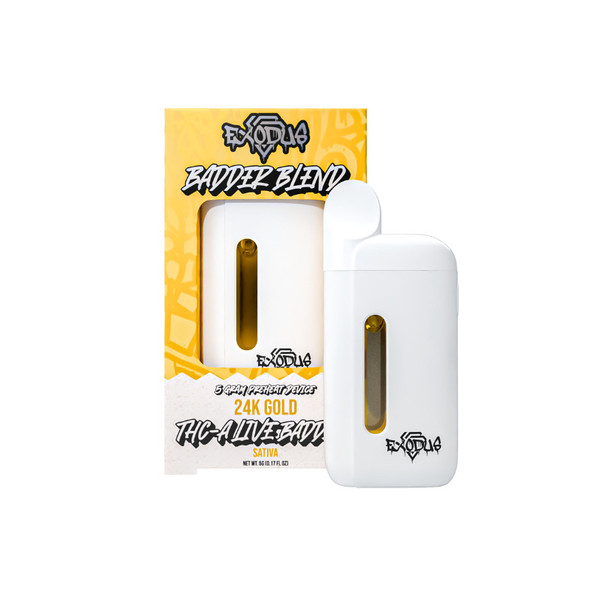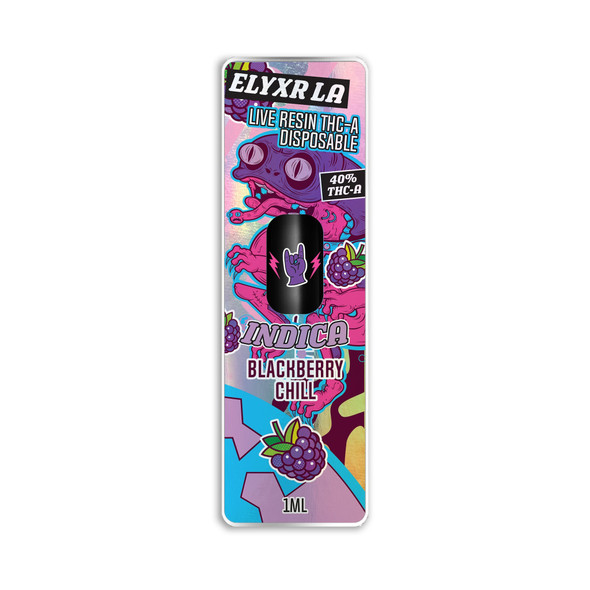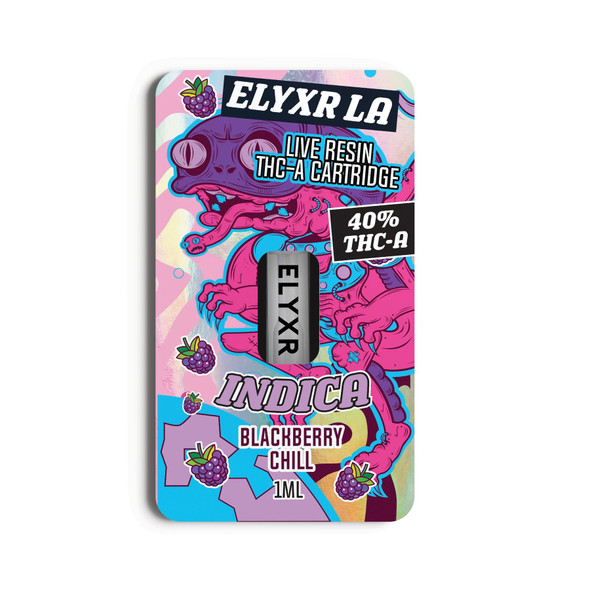THCA Concentrates
What makes THCA concentrates stand out? In simple terms, they’re ultra‑refined forms of hemp that contain elevated levels of THCA, the compound that becomes THC when exposed to heat. At The Calm Leaf, we curate THCA wax, diamond, badder, sugar and other textures that preserve the natural spectrum of cannabinoids and terpenes. Our lab‑tested products are additive‑free and come from trusted brands. Explore THCA dabs, THCA sugar and the best live resin disposable devices with confidence.
What Is THCA?
THCA means tetrahydrocannabinolic acid, a cannabinoid found in raw hemp. In its natural state it is non‑psychoactive. When exposed to heat through decarboxylation, THCA converts into THC, the well‑known compound associated with a “high.” That simple chemical shift explains why raw hemp remains mild, but heated concentrates can feel very potent.
Concentrates are gaining attention because brands like Binoid have pushed the limits on formats such as diamonds, wax, and sugar, making them staples in the market.
Legally, THCA falls under the federal definition of hemp as long as the final product contains less than 0.3 % delta‑9 THC on a dry‑weight basis. This threshold comes from the 2018 Farm Bill. Most THCA dabs meet that requirement, but it’s important to verify.
Why Choose THCA Concentrates?
Why pick THCA concentrates over other forms? Concentrates are prized for their purity and potency, delivering a refined cannabinoid profile without the fibrous plant material of flower. They come in a range of textures and flavors, from the large crystal formations of diamonds to the smooth, cake‑batter consistency of badder. Here are some reasons shoppers prefer them:
- Highly concentrated THCA: Diamonds and live resin often contain high percentages of THCA, making them appealing to experienced enthusiasts. You need only a small amount to achieve the desired effect, which can make them cost‑effective over time.
- Pure cannabinoid and terpene profiles: By isolating cannabinoids and capturing terpenes, concentrates provide a strong flavor and aroma. Live resin is flash‑frozen immediately after harvest to preserve trichomes and terpenes. The result is a rich, complex taste many users love.
- Variety of textures: If you enjoy a granular, sparkling product, THCA sugar offers a sugary appearance. If you prefer something creamy, badder has a whipped texture. Diamonds deliver hard crystalline chunks, while crumble has a dry, crumbly feel.
- Minimal plant matter: Concentrates remove most fats, waxes and chlorophyll, giving you a cleaner experience. Many people appreciate that concentrates can be easier on the lungs than raw plant material, though more research is needed to fully understand their long‑term impacts.
- Convenient formats: Some prefer pre‑filled, best live resin disposable devices for their simplicity. These devices offer single‑strain live resin in a portable form. Although we avoid instructing on consumption, we highlight that disposables exist for customers seeking discretion and convenience.
Not everyone is ready for concentrates, though. Because of their strength, start with a tiny amount and see how your body responds. Even seasoned users sometimes underestimate the effects of a new batch.
Popular Formats of THCA Concentrates
Dabs are often the first form people hear about, and once you know the basics, terms like badder, crumble, or sugar start making sense in the context of concentrates.
- Live Resin: Live resin is unique because the plant material is flash‑frozen immediately upon harvest and kept at sub‑zero temperatures during extraction. This preserves the trichomes and terpenes, yielding a rich, aromatic concentrate. Elyxr 80% THCA Full Spectrum Live Resin Badder Dabs showcases how resin-based textures retain more of the plant's character.
- Diamonds: Diamonds are the stars of the concentrate world. They form through diamond mining or crystalline isolation where an extract is slowly cooled, allowing large solid‑crystal formations of THCA to grow. Once separated from the surrounding sauce, these crystals sparkle like gems. The high cannabinoid content means they can be intense, which is why diamonds are often sold in very small jars. BioWellnessX 99.9% Pure THCA Diamonds reflects this style, showing how concentrates can crystallize into near-transparent structures that stand apart from softer textures.
- Sugar: Sugar concentrates are named for their sugary, crystallized appearance. During purging, tiny THCA crystals separate from the syrup, giving it a grainy look. Sugar is often slightly sticky, so it usually requires a stainless steel or glass dab tool for handling. Elyxr THC-A Private Reserve Live Rosin Sugar Dabs shows how sugar textures can appeal to those curious about crystal-rich concentrates.
- Badder and Budder: Badder, sometimes called budder, is made by whipping the extract while purging. This process gives it a smooth, creamy consistency. The texture can range from thick dough to wet sand depending on how long it’s whipped. Because of its malleable nature, badder is easy to handle with a tool. TabEASE THCA Diamond Sugar Badder 2G Dab fits this category well, combining sugar-like crystals with a whipped base that’s dense and workable.
- Crumble: Crumble has a dry, crumbly texture and can often be broken apart by. It’s created by purging a crude extract in a vacuum oven. Because of its structure, it’s versatile: some people like to sprinkle crumble over flower, while others prefer small amounts on their own. Elyxr 80% THCA Crumble Full Spectrum Live Resin Dabs is a clear example of this style, combining a classic crumble body with the character of live resin.
Key Benefits & Considerations
Are there benefits to using THCA concentrates? Research into THCA is ongoing, but some studies suggest it may have anti‑inflammatory, neuroprotective and anti‑nausea properties. Because it doesn’t bind strongly to CB1 receptors, THCA is non‑psychoactive until heated, which may make it appealing to those who don’t want the immediate “high” associated with THC. However, we must emphasize that these findings are preliminary and not intended to diagnose or treat any condition.
That said, concentrates aren’t for everyone. Here are a few considerations:
- Side effects: Some users report dry mouth, dizziness or mild nausea. These effects tend to be rarer and milder than those experienced with THC, but they still warrant caution. Fatigue and changes in appetite may also occur.
- Potency: Concentrates can be very strong. Start with a small amount, wait to see how it affects you, and gradually adjust. For those who have never tried concentrates before, we recommend beginning with products labelled “mild” and reading lab results carefully.
- Contamination risk: Because the market is growing fast, quality control varies. THCA products can sometimes contain residual solvents or impurities. According to industry analysis, there is a risk of contamination and impurities due to lack of regulation. That’s why third‑party lab testing is essential. Our lab reports check for pesticides, heavy metals and residual solvents to ensure our concentrates meet safety standards.
- Legal considerations: While THCA is federally legal if the product contains less than 0.3 % delta‑9 THC, state and international laws differ. Always review local regulations before purchasing or travelling with THCA products.
Types of THCA Products
What kinds of THCA products exist? You’ll find THCA not only in concentrates but across a wide range of product categories. Here’s a quick overview:
- THCA Flower: Raw THCA flower retains the cannabinoid in its natural form. Moonrocks, pre‑rolls and bulk buds fall into this category. Because THCA remains non‑psychoactive until heated, the experience will depend on how it’s consumed.
- THCA Vapes: Innovation doesn’t stop with concentrates. Vape products are also evolving, with new approaches that highlight transparency and reinforce why verified lab results are important. Cartridges and best live resin disposable pens offer a convenient way to enjoy THCA concentrates without the need for extra equipment. Disposable devices come pre‑filled and ready to use.
- THCA Concentrates: This is where diamonds, sugar, badder, crumble, shatter and live resin shine. These products emphasize potency and flavor. For example, THCA sugar provides a granulated texture, and diamonds are large THCA crystals.
- THCA Edibles: Some edibles incorporate THCA in its raw form. These products rely on decarboxylation during cooking to convert THCA into THC, though the precise conversion rate varies depending on temperature and duration.
- Tinctures and Capsules: For those who prefer measured servings without any texture, tinctures and capsules offer consistent amounts of THCA. Because they’re often made with carrier oils, they can be used sublingually or swallowed.
Shop THCA Concentrates, THCA Dabs, THCA Sugar and More
Our goal at The Calm Leaf is to make your search for THCA concentrates effortless and enjoyable. When you explore our selection of diamonds, sugar, live resin, badder and crumble, you’re tapping into a marketplace built on transparency and care.
We provide detailed lab reports, so you can verify the purity and potency of each batch. Our prices remain accessible. Orders over $49.99 ship free, and we process each package discreetly and efficiently.
From dough-inspired edibles to crystalline concentrates, hemp products keep moving forward. The creativity behind these products shows how far the category has come in a short time.
Frequently Asked Questions
How are THCA diamonds made?
THCA diamonds develop through a process called crystalline isolation. An extract rich in cannabinoids is gradually cooled, allowing THCA molecules to form crystals. These crystals separate from the remaining “sauce,” which is a terpene‑rich liquid. Manufacturers then collect the solid diamonds and sometimes recombine them with sauce for extra flavor. Because this method relies on time and controlled conditions, the result is a visually striking concentrate with minimal impurities. Our diamonds are always tested for purity and solvent residue before they reach our shelves.
What’s the difference between THCA sugar and THCA badder?
Though both sugar and badder come from similar extraction methods, they differ in texture and appearance. THCA sugar has a crystallized, grainy texture due to tiny THCA crystals forming during the purging process. It can be slightly sticky and is often scooped with a small tool. Badder, on the other hand, is smooth and creamy because the extract is whipped during purging. Its consistency ranges from thick dough to wet sand. The choice between sugar and badder often comes down to how you like handling your concentrates and the flavor you prefer.
Are THCA concentrates legal where I live?
In the United States, THCA concentrates are considered hemp products as long as the delta‑9 THC content stays below 0.3 %. However, many states have additional rules governing concentrates, and some countries treat THCA similarly to THC. Because regulations change quickly, it’s vital to check your local laws before ordering. We keep our products compliant with federal guidelines and provide lab reports showing THC and THCA levels so you can make an informed decision.
How should I store THCA concentrates?
To maintain freshness, keep concentrates in an airtight container away from heat, light and moisture. A cool, dark place such as a cabinet or refrigerator works well. Exposure to light and warm temperatures can cause THCA to decarboxylate into THC, altering the product’s nature. Additionally, avoid handling concentrates with bare hands; use clean tools to prevent introducing contaminants. Proper storage can preserve texture and flavor for months.
What do third‑party lab results reveal?
Lab reports are critical when shopping for THCA products. They show the cannabinoid profile (including THCA and THC percentages), terpene content, and whether any residual solvents, heavy metals or pesticides are present. Our reports are conducted by state‑authorized laboratories and accessible on our website. Checking these results helps you verify that the concentrate is free from unwanted compounds and meets legal thresholds. It also gives insight into the potency and flavor you can expect.
Are THCA concentrates suitable for beginners?
Concentrates are powerful, so new users should proceed carefully. Starting with a very small amount is the best way to gauge how your body reacts. Because THCA products vary in texture and strength, read the product description and lab results before making a choice. Some beginners find sugar or crumble easier to handle due to their texture, while others prefer the cleaner look of diamonds. Consult a knowledgeable professional if you’re unsure which product fits your needs.
How do THCA concentrates differ from Delta‑9 THC products?
The primary difference lies in psychoactivity. THCA is non‑psychoactive until it undergoes decarboxylation, whereas Delta‑9 THC is active in its natural form. This means raw THCA concentrates won’t produce a “high” until heated. Additionally, THCA products often contain higher total cannabinoids per gram because they’re refined from raw plant material. When choosing between the two, consider your desired experience: do you want a non‑psychoactive precursor or the active compound? Always ensure your product’s THC content complies with local law.
Do THCA concentrates have a strong aroma?
Concentrates can smell very strong or surprisingly subtle, depending on the extraction method and terpene content. Live resin and diamonds with sauce retain a robust terpene profile, so they often have pronounced, complex aromas. Isolated diamonds and distillate‑heavy products may have milder scents because many terpenes have been removed. If aroma is important to you, look for products that mention “sauce,” “live resin” or a high terpene content in their description.
What is the shelf life of THCA concentrates?
When stored properly, THCA concentrates can maintain their quality for six months to a year. Factors affecting shelf life include exposure to heat, light and oxygen. Diamonds and sugar tend to stay stable longer than more liquid forms like sauce. If you notice discoloration, changes in texture or unusual smell, it may be time to replace the product. Always refer to the batch’s lab report for its production date and suggested use‑by period.
Can THCA concentrates be used in cooking?
Some people enjoy experimenting with THCA concentrates in recipes. Remember that decarboxylation is necessary to convert THCA into THC, so heat must be applied. If you add sugar or crumble to a butter or oil base and heat gently, the THCA will transform into THC over time. Because concentrates are potent, it’s essential to measure small amounts and distribute them evenly in your recipe. Always label homemade edibles clearly and store them safely away from children or pets.



















